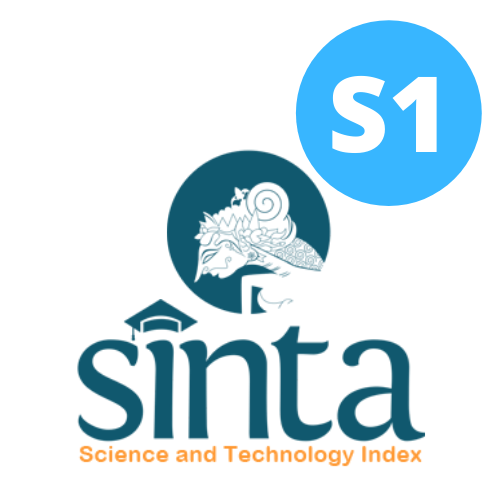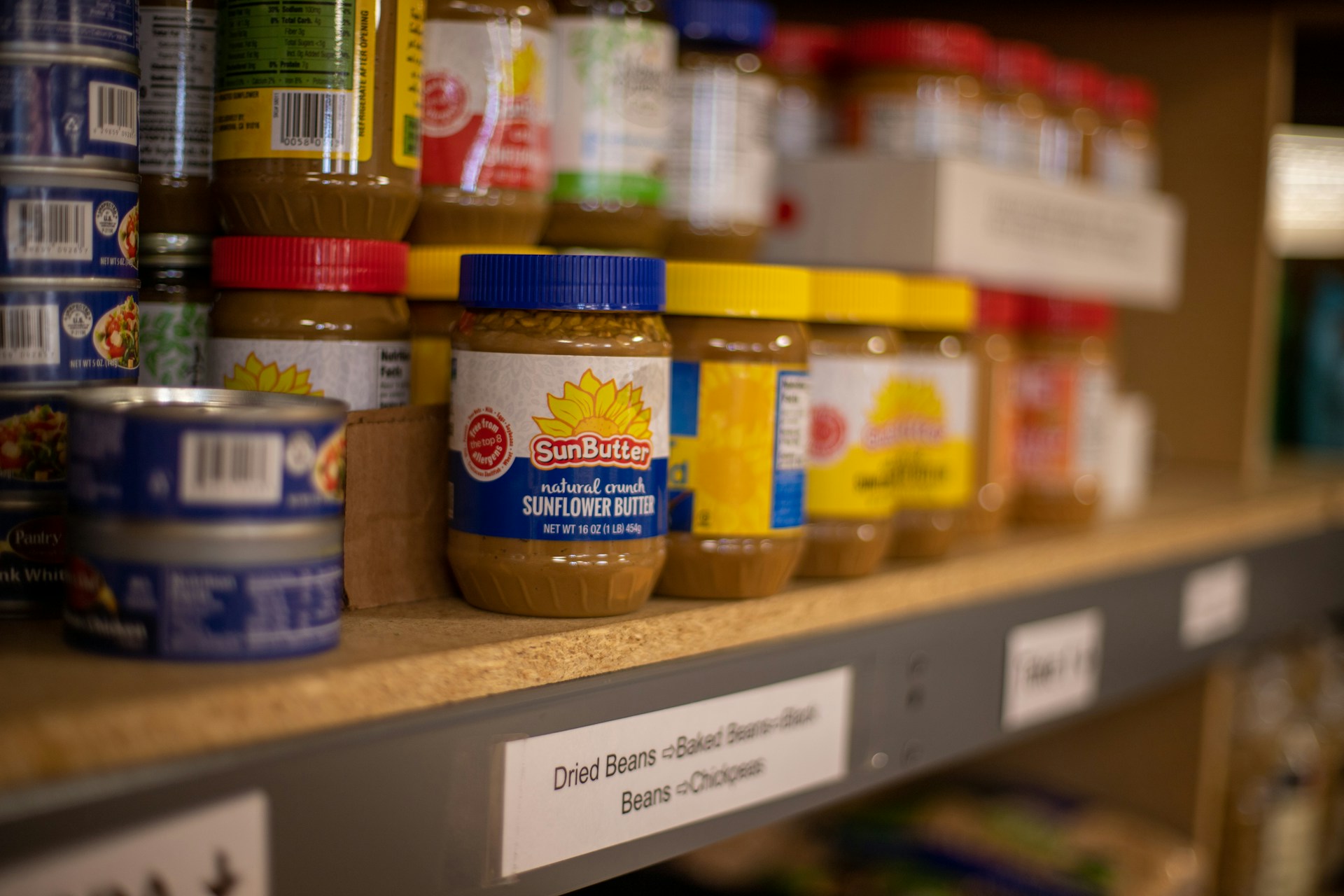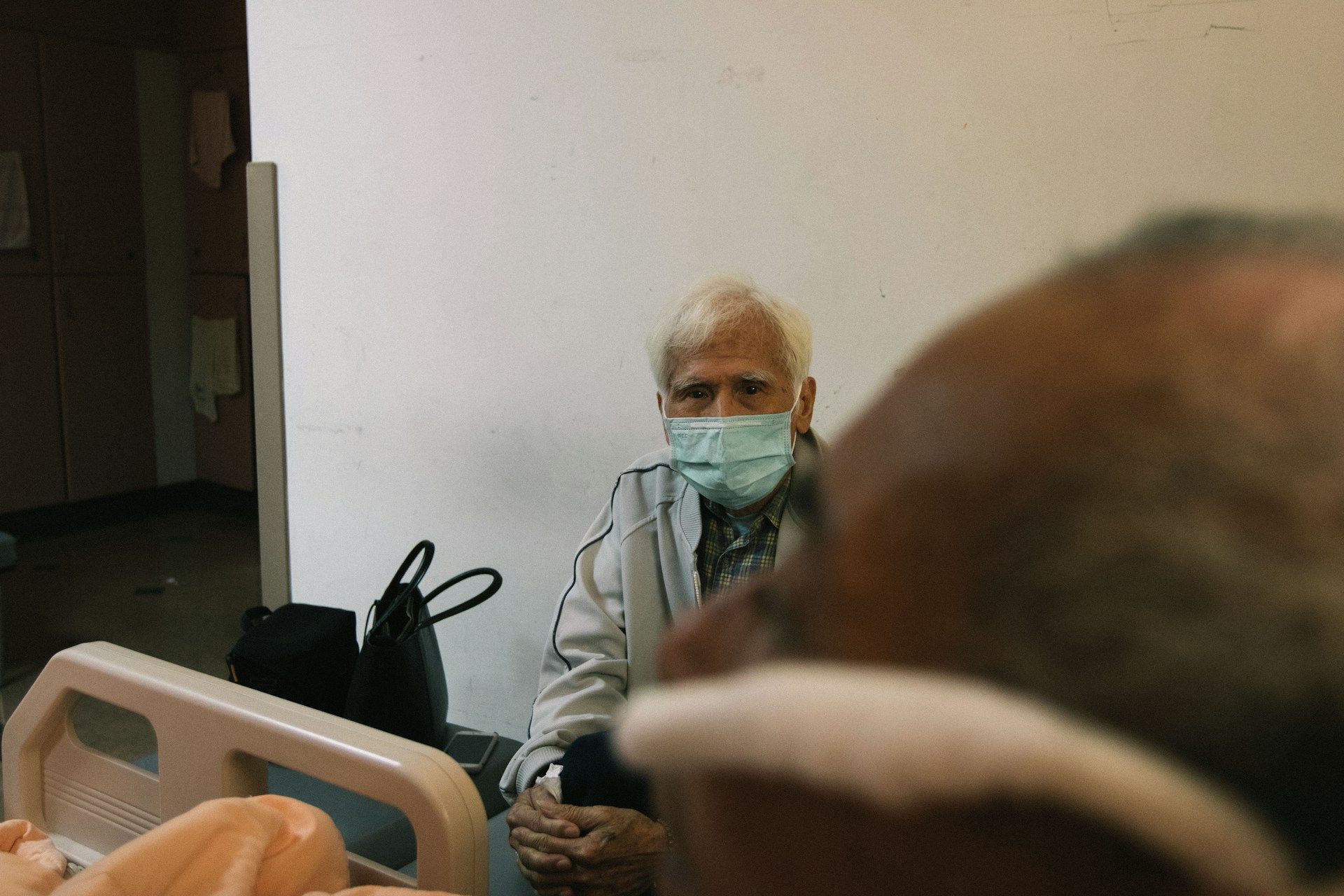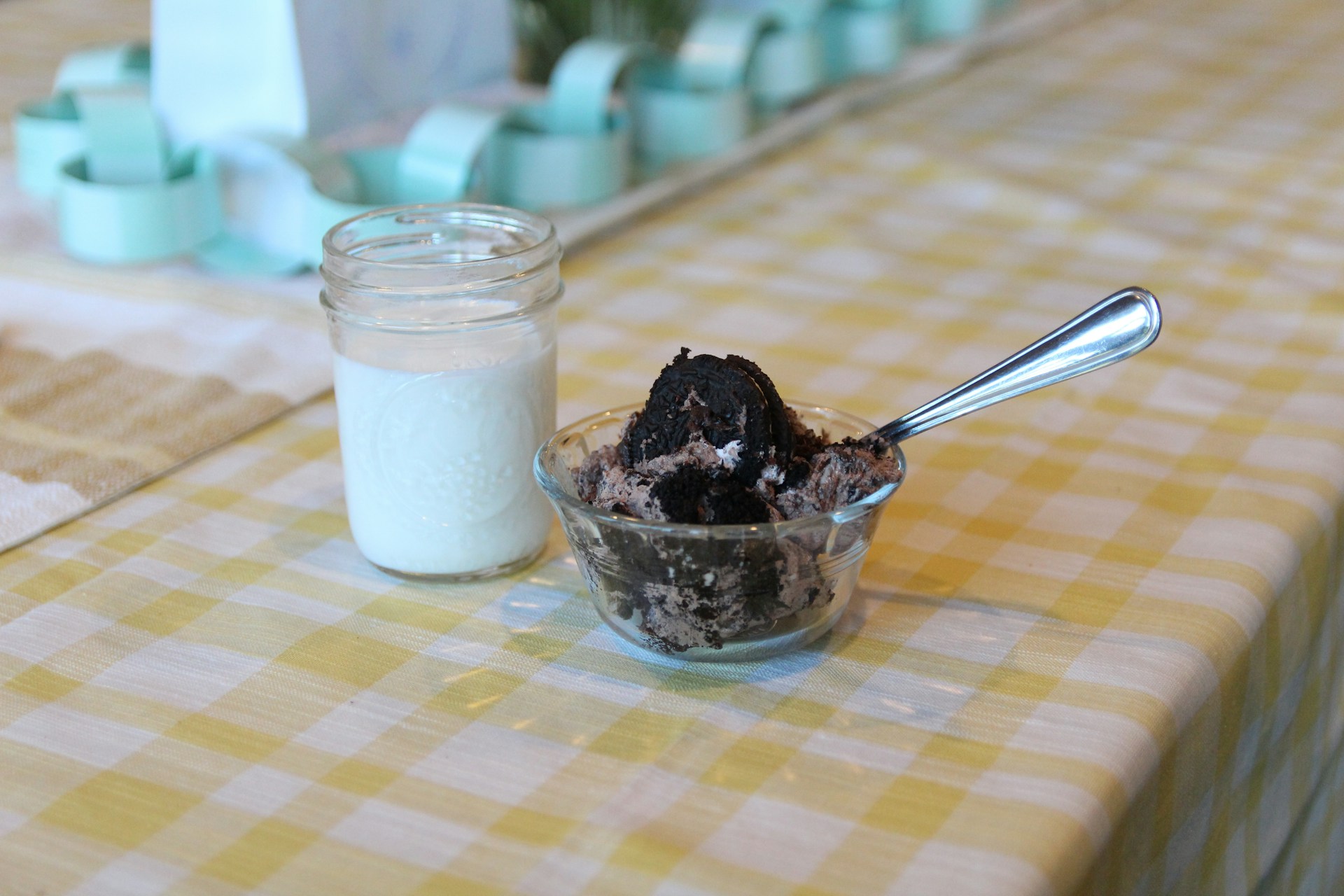Total Lactic Acid Bacteria and Antibacterial Activity in Yoghurt with Addition of Ananas comosus Merr. and Cinnamomum burmannii
Downloads
Background: Diarrhea disease is one of gastrointestinal disorders which is the second leading cause of death in children under five years. Food and beverage contamination is the biggest cause of diarrhea in developing countries. Nanas madu (Ananas comosus Merr.)and cinnamon (Cinnamomum burmannii) have antibacterial properties that can inhibit the growth of Escherichia coli and Salmonella typhi causing diarrhea.
Objective: This study aimed to analyze the total differences of Lactic Acid Bacteria (LAB) and antibacterial activity in yoghurt with the addition of nanas madu and cinnamon extract.
Methods: This was an experimental study with various treatment in adding honey cream pineapple (0%, 20%, 40%, and 60%) and cinnamon extract (4% and 6%). Total LAB was calculated using the Total Plate Count (TPC) method and antibacterial activity was tested using Kirby Bauer method.
Results: There was no significant difference in yoghurt with the addition of honey cream pineapple and cinnamon extract.Yoghurt with the highest LAB was yoghurt with addition 40% of honey cream pineapple and 6% of cinnamon extract (N40M2) with total LAB 1,43 x 1019 CFU/ml. The results of the antibacterial activity showed no significant difference of inhibition zone against S. typhi¸ while there was significant difference of inhibition zone against E. coli. The highest activity against S. typhi was yoghurt with addition 60% of honey cream pineapple and 4% of cinnamon extract (N60M1) resulting 6,81 mm inhibition zone and the highest activity against E. coli was N40M1 resulting 6,77 mm of inhibition zone.
Conclusion: Total LAB yoghurt with the addition of nanas madu and cinnamon extract have met FAO and SNI standards with LAB minimum 107 CFU/ml. Antibacterial activity of all yoghurt treatment categorized as medium inhibition (5-10 mm).
World Health Organization. Diarrhoeal Disease Fact Sheet. (2017).
Barr, W. & Smith, A. Acute Diarrhea in Adults. Am Fam Physician 89, 180–189 (2014).
Kementrian Kesehatan Republik Indonesia. Hasil Riset Kesehatan Dasar 2018. (2018).
Brown, K. H. Symposium : Nutrition and Infection , Prologue and Progress Since 1968 Diarrhea and Malnutrition. Am. Soc. Nutr. Sci. 328–332 (2003).
Keusch, G. T. et al. Diarrheal Diseases. in Disease Control Priorities in Developing Countries (eds. Jamison, D., Breman, J. & Measham, A.) (Oxford University Press, 2006).
Saeed, A., Abd, H. & Sandstrom, G. Microbial aetiology of acute diarrhoea in children under five years of age in Khartoum , Sudan. J. Med. Microbiol. 64, 432–437 (2015).
Eckburg, P. B. et al. Diversity of the Human Intestinal Microbial Flora. Science (80-. ). 308, 1635–1638 (2005).
Rodrigues, J. F., Piazza, R. M. F., Ferreira, L. C. S. & Martinez, M. B. Diarrheagenic Escherichia coli. Brazilian J. Microbiol. 47, 3–30 (2016).
Näsström, E. et al. Salmonella Typhi and Salmonella Paratyphi A elaborate distinct systemic metabolite signatures during enteric fever. eLife Sci. 3, 1–19 (2014).
Hidayah, N. Review Article Salmonella : A foodborne pathogen. Int. Food Res. J. 473, 465–473 (2011).
World Health Organization. E.coli Fact Sheet. (2018).
Corbett, D. & Roberts, I. S. Capsular Polysaccharides in Escherichia coli. in Advances in Applied Microbiology 65, 1–26 (Elsevier, 2008).
Koseki, S., Mizuno, Y. & Sotome, I. Modeling of Pathogen Survival during Simulated Gastric Digestion. Appl. Environ. Microbiol. 77, 1021–1032 (2011).
Katouli, M. Population structure of gut Escherichia coli and its role in development of extra-intestinal infections. 2, 59–72 (2010).
Sanders, M. E. et al. Safety assessment of probiotics for human use. Gut Microbes 1, 164–185 (2010).
Rul, F. Yogurt : microbiology , organoleptic properties and probiotic potential. in Fermented Food - Part II: Technological Interventions 418–450 (CRC Press, 2017).
Mirghafourvand, M., Rad, A. H., Mohammad, S., Charandabi, A. & Shokri, K. The Effect of Probiotic Yogurt on Constipation in Pregnant Women : A Randomized Controlled Clinical Trial The Effect of Probiotic Yogurt on Constipation in Pregnant Women : A Randomized Controlled Clinical Trial. Iran Red Crescent Med J. 18, (2016).
Choudhary, M., Sharma, D. & Beniwal, M. Traditional Yoghurt and Probiotic in Treatment of Acute Childhood Diarrhoea : A Blinded Randomized Controlled Non - Inferiority Trial. J. Pediatr. Neonatal Care 2, 1–7 (2015).
Baroja, M. L. & Kirjavainen, P. V. Anti-inflammatory effects of probiotic yogurt in inflammatory bowel disease patients. 1, 470–479 (2007).
Pala, V. et al. Yogurt consumption and risk of colorectal cancer in the Italian European Prospective Investigation into Cancer and Nutrition cohort. 2719, 2712–2719 (2011).
Coı, J. D., Travaglia, F., Piana, G., Capasso, M. & Arlorio, M. Euterpe oleracea juice as a functional pigment for yogurt. 38, 893–897 (2005).
Rachman, S. D., Djajasoepena, S., Kamara, D. S., Idar, I. & Sutrisna, R. Kualitas Yoghurt yang Dibuat dengan Kultur Dua (Lactobacillus bulgaricus, Streptococcus thermophilus dan Lactobacillus acidophilus) dan Tiga Bakteri (Lactobacillus bulgaricus, Streptococcus thermophilus, dan Lactobacillus acidophilus). Chem. Nat. Acta 3, 76–79 (2015).
Vinderola, C. G., Mocchiutti, P. & Reinheimer, J. A. Interactions Among Lactic Acid Starter and Probiotic Bacteria Used for Fermented Dairy Products. J. Dairy Sci. 85, 721–729 (2002).
Insyiroh, U., Budi, S. & M, A. Nilai pH, Keasaman, Citarasa, dan Kesukaan Susu Fermentasi dengan Penambahan Ekstrak Buah Nanas. J. Apl. Teknol. Pangan 3, 114–116 (2014).
Clark, S., Barbara, M. & M.A, G. A 100-Year Review : Advances in Goat Milk Research 1. 10026–44 (2017).
Kusumawati, I. Analisis Kandungan Gizi dan Aktivitas Antioksidan pada yoghurt dengan Penambahan Nanas Madu (Ananas comosus Mer.) dan Ekstrak Kayu Manis (Cinnamomum burmanni) [skripsi]. (Universitas Diponegoro, 2018).
Pohan, L. Ekstraksi Minyak Kelapa Sawit dengan Menggunakan Enzim Bromelin Nenas [skripsi]. Masyarakat Perkelapa-Sawitan Indonesia (Institut Pertanian Bogor, 2002).
Herdwiani, W. & Rejeki, E. S. Determination of Cytotoxic Activity from Cinnamon Stem Bark for T47D Cell Culture. J. Farm. Indones. 12, 102–113 (2015).
Zharfan, R. & Mustika, A. Antimicrobial Activity of Pineapple (Ananas comosus L . Merr) Extract against Multidrug-resistant of Pseudomonas aeruginosa : An In Vitro Study. Indones. J. Trop. Infect. Dis. 6, 118–123 (2017).
Sayuti, A. I., Umayah, E. & Puspitasari, E. Uji Aktivitas Antibakteri Kombinasi Minyak Atsiri Lempuyang Wangi (Zingiber aromaticum Val.) dan Bangle (Zingiber cassumunar Roxb.) terhadap Bakteri Staphylococcus aureus dan Escherichia coli. Artikel Ilmiah Hasil Penelitian Mahasiswa (Universitas Jember, 2014).
Wardani, E. K., Zulaekah, S. & Purwani, E. Pengaruh Penambahan Sari Buah Nanas (Ananas comosus) terhadap Jumlah Bakteri Asam Laktat (BAL) dan Nilai pH Soyghurt. J. Kesehat. 10, 68–74 (2017).
Starr, F., Starr, K. & Loope, L. Cinnamomum burmannii. Hawaiian Ecosystems at Risk Project (HEAR), United States Geological Survey, Biological Resources Division Halekala Field Station, Maui (2003). Available at: http://www.hear.org/Pier/pdf/pohreports/cinnamomum_ burmannii.pdf. (Accessed: 16 Juni 2019)
Food and Agriculture Organization of the United Nations. Codex stan 243-2003: Standard for fermented milks. in Milk and Milk Products 1–11 (2010).
Sacher, R. A., McPherson, R.A. Tinjauan Klinis Hasil Pemeriksaan Laboratorium. 11th ed. (Penerbit EGC Buku Kedokteran, 2004).
El, T. Reliability of Kirby-Bauer Disk Diffusion Method for Detecting Carbapenem Resistence in Acinetobacter baumanni-calcoaceticus. Antimicrob Agents Chemother. 57, (2013).
Misnadiarly, D. Mikrobiologi untuk klinik dan laboratorium. (Penerbit Rineka Cipta, 2014).
Kong, X., Liu, X., Li, J. & Yang, Y. Advances in Pharmacological Research of Eugenol. Curr Opin Complement Altern Med. 1, 8–11 (2014).
Gann, L. D. Antimicrobial Activity of Essential Oils and Their Components Against Lactic Acid Bacteria. (The University of Tennessee, 2013).
Agustine, L., Okfrianti, Y. & Jumiyati. Identifikasi Total Bakteri Asam Laktat (BAL) pada Yoghurt dengan Variasi Sukrosa dan Susu Skim. J Dunia Gizi. 1, 79–83 (2018).
Rahmadi, A. Bakteri Asam Laktat dan Mandai Cempedak. Bayu, editor. (Mulawarman University Press, 2019).
Guo, M. Goat Milk. In: Caballero B, editor. Encyclopedia of Food Sciences and Nutrition. 2nd ed. (Academic Press, 2003).
Shan, B., Cai, Y., Rooks, J. & Orke, H. Antibacterial Properties and Major Bioactive Components of Cinnamon Stick (Cinnamomum burmannii): Activity against Foodborne Pathogenic Bacteria. J Agric Food Chem. 55, 5484–90 (2007).
Gianti, I., Evanuarini, H. Pengaruh Penambahan Gula dan Lama Penyimpanan terhadap Kualitas Fisik Susu Fermentasi. J Ilmu dan Teknol Has Ternak. 6, 28–33 (2011).
Mardalena. Fase Pertumbuhan Isolat Bakteri Asam Laktat (BAL) Tempoyak Asal Jambi yang Disimpan Pada Suhu Kamar. J Sain Peternak Indones. 11, 58–66 (2016).
Trisnawita, Y., Silalahi, J. & Sinaga, S. M. The Effect of Storage Condition on Viability of Lactic Acid Bacteria in Probiotic Product. Asian J Pharm Clin Res. 11, 84–6 (2018).
Pelczar, M. J., Chan, E. Dasar-dasar Mikrobiologi. (Penerbit UI Press, 2009).
Karlina, C. Y., Ibrahim, M. & Trimulyono, G. Aktivitas Antibakteri Ekstrak Herba Krokot (Portulaca oleracea L.) terhadap Staphylococcus aureus dan Escherichia coli. Lentera Bio Unesa. 2, 87–93 (2005).
Shen, Y., Jia, L., Honma, N., Hosono, T. & Ariga, T. Beneficial Effects of Cinnamon on the Metabolic Syndrome, Inflammation, and Pain, and Mechanisms Underlying These Effects – A Review. J Tradit Complement Med. 2, 27–32 (2011).
Damar, A. C., Runtuwene, M. R. J. & Wewengkang, D. S. Kandungan Flavonoid dan Aktivitas Antioksidan Total Ekstrak Etanol Daun Kayu Kapur (Melanolepsis multiglandulosa Reinch f). J Ilm Farm Unstrat. 3, 11–21 (2014).
Chaaban, H., Ioannou, I. & Christine, G. Effect of heat processing on thermal stability and antioxidant activity of six flavonoids. J Food Process Preserv. 1–12 (2017).
Fauziah, P. N., Nurhajati, J. & Crysanti. Daya Antibakteri Filtrat Asam Laktat dan Bakteriosin Lactobacillus Bulgaricus dalam Soygurt terhadap Pertumbuhan Klebsiella pneumonia. Bionat J Ilmu Hayati & Fisik. 15, 132–138 (2013).
Sablon, E., Contreras, B. & Vandamme, E. Antimicrobial Peptides of Lactic Acid Bacteria : Mode of Action, Genetics, and Biosynthesis. In: Scheper T, editor. Advances in Biochemical Engineering/Biotechnology. (Springer, 2000).
Coninck, V, De., Keller, E. X., Doizi, S. & Audouin, M. Evaluation of a Portable Urinary pH Meter and Reagent Strips. J Eudourology. 32, (2018).
AMERTA NUTR by Unair is licensed under a Creative Commons Attribution-ShareAlike 4.0 International License.
1. The journal allows the author to hold the copyright of the article without restrictions.
2. The journal allows the author(s) to retain publishing rights without restrictions
3. The legal formal aspect of journal publication accessibility refers to Creative Commons Attribution Share-Alike (CC BY-SA).
4. The Creative Commons Attribution Share-Alike (CC BY-SA) license allows re-distribution and re-use of a licensed work on the conditions that the creator is appropriately credited and that any derivative work is made available under "the same, similar or a compatible license”. Other than the conditions mentioned above, the editorial board is not responsible for copyright violation.












































